L Antigen Family Member 3 Serves as a Prognostic Biomarker for the Clinical Outcome and Immune Infiltration in Skin Cutaneous Melanoma
- PMID: 33829062
- PMCID: PMC8000545
- DOI: 10.1155/2021/6648182
L Antigen Family Member 3 Serves as a Prognostic Biomarker for the Clinical Outcome and Immune Infiltration in Skin Cutaneous Melanoma
Abstract
L Antigen Family Member 3 (LAGE3) is an important RNA modification-related protein. Whereas few studies have interrogated the LAGE3 protein, there is limited data on its role in tumors. Here, we analyzed and profiled the LAGE3 protein in skin cutaneous melanoma (CM) using TCGA, GTEx, or GEO databases. Our data showed an upregulation of LAGE3 in melanoma cell lines compared to normal skin cell lines. Besides, the Kaplan-Meier curves and Cox proportional hazard model revealed that LAGE3 was an independent survival indicator for CM, especially in metastatic CM. Moreover, LAGE3 was negatively associated with multiple immune cell infiltration levels in CM, especially CD8+ T cells in metastatic CM. Taken together, our study suggests that LAGE3 could be a potential prognostic biomarker and might be a potential target for the development of novel CM treatment strategies.
Copyright © 2021 Jingjing Song et al.
Conflict of interest statement
The authors declare that there is no conflict of interest regarding the publication of this paper.
Figures


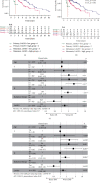
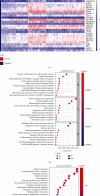
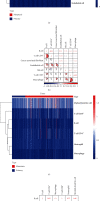
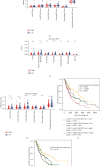

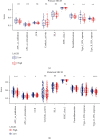
Similar articles
-
Identification of Prognostic Biomarkers of Cutaneous Melanoma Based on Analysis of Tumor Mutation Burden.Comput Math Methods Med. 2020 Nov 16;2020:8836493. doi: 10.1155/2020/8836493. eCollection 2020. Comput Math Methods Med. 2020. PMID: 33273963 Free PMC article.
-
Data mining of immune-related prognostic genes in metastatic melanoma microenvironment.Biosci Rep. 2020 Nov 27;40(11):BSR20201704. doi: 10.1042/BSR20201704. Biosci Rep. 2020. PMID: 33169786 Free PMC article.
-
Tumor-associated B cells in cutaneous primary melanoma and improved clinical outcome.Hum Pathol. 2016 Aug;54:157-64. doi: 10.1016/j.humpath.2016.03.022. Epub 2016 Apr 21. Hum Pathol. 2016. PMID: 27107457
-
Tumor-infiltrating lymphocytes: apparently good for melanoma patients. But why?Cancer Immunol Immunother. 2011 Aug;60(8):1153-60. doi: 10.1007/s00262-011-1026-2. Epub 2011 May 7. Cancer Immunol Immunother. 2011. PMID: 21553145 Free PMC article. Review.
-
Interplay between small and long non-coding RNAs in cutaneous melanoma: a complex jigsaw puzzle with missing pieces.Mol Oncol. 2019 Jan;13(1):74-98. doi: 10.1002/1878-0261.12412. Epub 2018 Dec 20. Mol Oncol. 2019. PMID: 30499222 Free PMC article. Review.
Cited by
-
Correlation of LAGE3 with unfavorable prognosis and promoting tumor development in HCC via PI3K/AKT/mTOR and Ras/RAF/MAPK pathways.BMC Cancer. 2022 Mar 21;22(1):298. doi: 10.1186/s12885-022-09398-3. BMC Cancer. 2022. PMID: 35313850 Free PMC article.
-
Detecting Deleterious Recessive Variants in Large Yellow Croaker Using Data from 7337 Individuals.Mar Biotechnol (NY). 2025 Jun 26;27(4):105. doi: 10.1007/s10126-025-10486-1. Mar Biotechnol (NY). 2025. PMID: 40569320
-
DIRAS2 Is a Prognostic Biomarker and Linked With Immune Infiltrates in Melanoma.Front Oncol. 2022 May 16;12:799185. doi: 10.3389/fonc.2022.799185. eCollection 2022. Front Oncol. 2022. PMID: 35651810 Free PMC article.
-
LAGE3 promoted cell proliferation, migration, and invasion and inhibited cell apoptosis of hepatocellular carcinoma by facilitating the JNK and ERK signaling pathway.Cell Mol Biol Lett. 2021 Nov 27;26(1):49. doi: 10.1186/s11658-021-00295-4. Cell Mol Biol Lett. 2021. PMID: 34837962 Free PMC article.
-
Analysis of L Antigen Family Member 3 as a Potential Biomarker and Therapeutic Target Associated With the Progression of Hepatocellular Carcinoma.Front Oncol. 2022 Mar 31;12:813275. doi: 10.3389/fonc.2022.813275. eCollection 2022. Front Oncol. 2022. PMID: 35433409 Free PMC article.
References
-
- Patel A., Moyers J., Nagaraj G. Immunotherapy in metastatic melanoma: a sociodemographic analysis of the National Cancer Database. Journal of Clinical Oncology. 2020;38(5_Supplement):p. 87. doi: 10.1200/JCO.2020.38.5_suppl.87. - DOI
MeSH terms
Substances
LinkOut - more resources
Full Text Sources
Other Literature Sources
Medical
Research Materials

